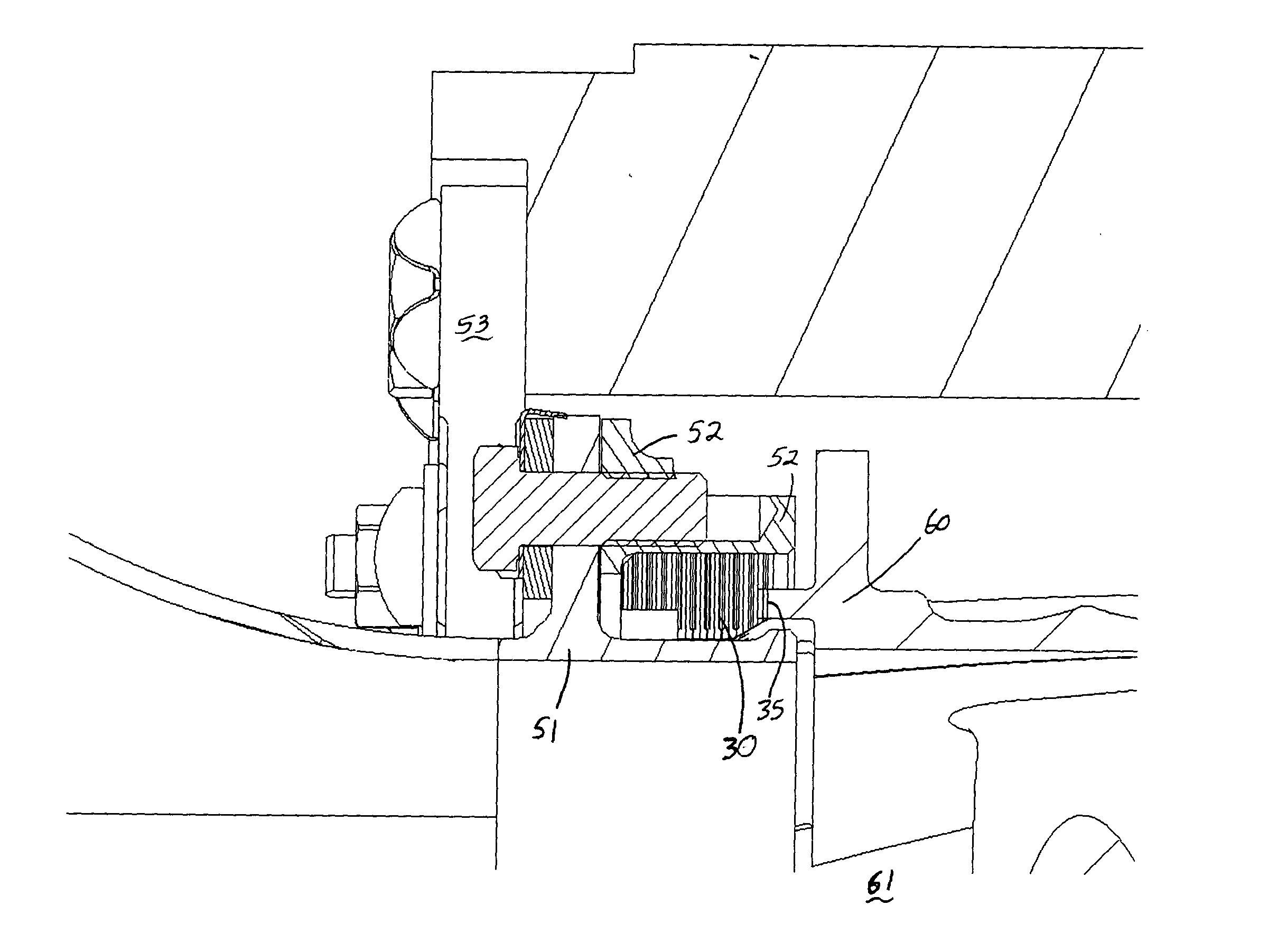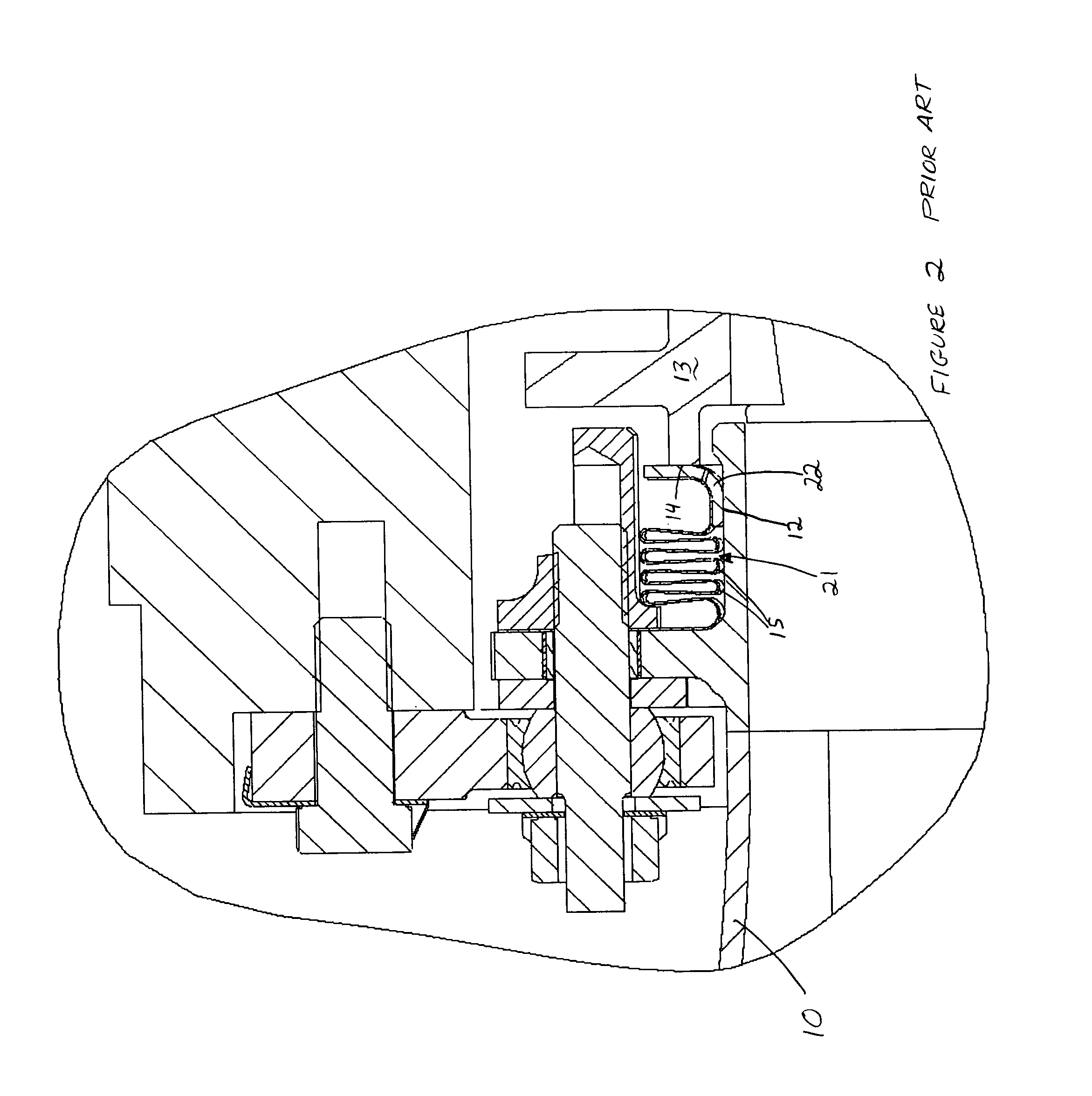Transition duct honeycomb seal
- Summary
- Abstract
- Description
- Claims
- Application Information
AI Technical Summary
Benefits of technology
Problems solved by technology
Method used
Image
Examples
Embodiment Construction
[0019] The preferred embodiment of the present invention is shown in detail in FIGS. 3-6 and installed on a gas turbine combustor transition duct in FIGS. 7 and 8. The sealing device is preferably designed for use between a gas turbine combustor transition duct aft frame and a turbine inlet region. Referring now to FIG. 3, sealing device 30 is shown in plane view and comprises a first end 31 and a second end 32 in spaced relation thereby forming a circumferential length 33. FIG. 5 shows an end view of sealing device 30 that depicts a forward face 34 and an aft face 35 in spaced relation thereby forming an axial width 36. Furthermore, sealing device 30 has an inner surface 37 and an outer surface 38 in spaced relation thereby forming a radial height 39.
[0020] Referring back to FIG. 4, a portion of sealing device 30 is shown in greater detail. A plurality of channels 40 is shown extending axially along inner surface 37. Each of channels 40 has a channel width 41 and a channel depth 4...
PUM
 Login to View More
Login to View More Abstract
Description
Claims
Application Information
 Login to View More
Login to View More - R&D
- Intellectual Property
- Life Sciences
- Materials
- Tech Scout
- Unparalleled Data Quality
- Higher Quality Content
- 60% Fewer Hallucinations
Browse by: Latest US Patents, China's latest patents, Technical Efficacy Thesaurus, Application Domain, Technology Topic, Popular Technical Reports.
© 2025 PatSnap. All rights reserved.Legal|Privacy policy|Modern Slavery Act Transparency Statement|Sitemap|About US| Contact US: help@patsnap.com



